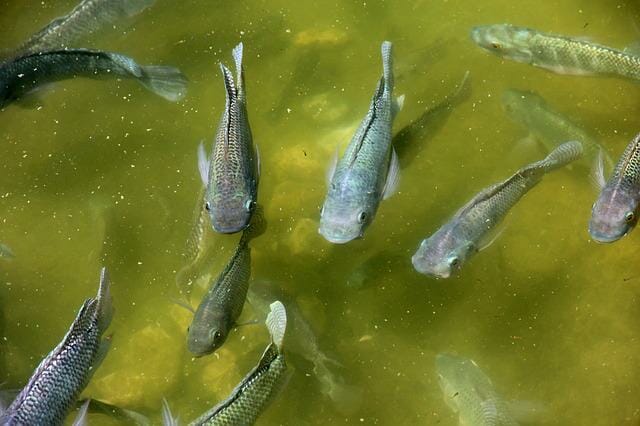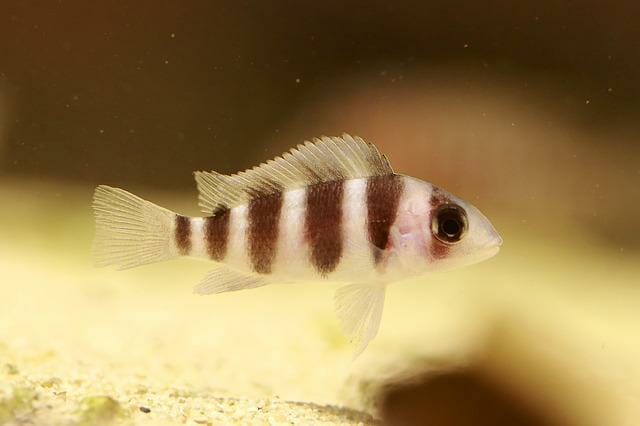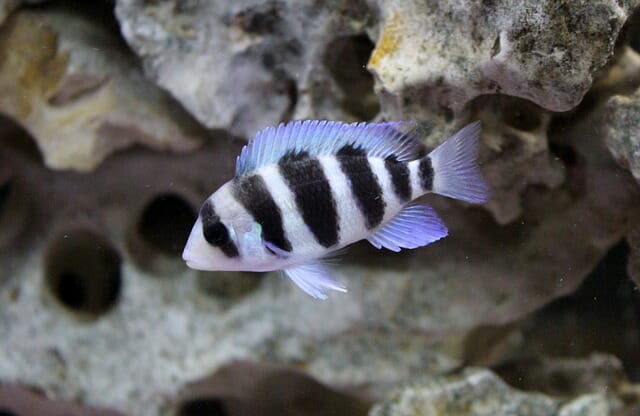Convict Cichlid Male Or Female: How to Tell the Difference?

Convict cichlids are one of the most popular fish in the aquarium hobby and are easy to care for and make great additions to any fish tank.
The convict cichlid comes in male and female varieties and can vary significantly in size. Males are typically larger than females, but there is no definitive answer to which sex is better. The male convict cichlid is more colorful and active than the female. Both sexes of these fish make great additions to any tank, but it’s important to remember that they are aggressive fish and should not be kept with other small animals.
Table of Contents
Differences Between Male vs. Female Convict Child
There are a few ways to tell the difference between male and female convict cichlids. Males tend to be slightly larger and have a more pronounced dorsal fin. Females tend to be a little smaller, but their fins are not as pronounced. In addition, females often have a greenish hue on their bodies, while males are typically darker. Here are some of the differences you might want to look out for.
Size
Males are generally larger than females in most fish species, especially in the cichlid family, where males can be 4-5 inches long. One reason for this may be that males need to protect their territories and resources from other males. Additionally, larger male cichlids are more likely to find mates and reproduce. For these reasons, males are generally an excellent choice to get more fish.
Belly
Females generally have a greenish hue on their bodies. In contrast, males are typically darker, with heavy black stripes down the body. The females with orange body coloration tend to be quite colorful and can add a nice touch of coral reef or peacock color into your tank decoration. The female cichlids have more diffuse color patterns, making it difficult to tell the difference between sexes until the mating season begins. The researchers must decide if there will be fights or spawning of fry pairs – usually egg-laying females vs. egg-crushing males.
Fins
Males of many cichlid species have longer and more pointed fins than females, most likely due to the male’s need to compete for mates. The sharp fins help the male maneuver better in the water and attract mates. Females generally have shorter, rounder fins. The development of the growth spurt in adolescents is somewhat dependent on the ratio between calories and protein, which varies within species. Typically when females are stressed, up to twice as much food is consumed as males to develop faster, boosting their immune system to help them fend off threats from other male mates: physical or chemical assault (imagined or actual).

Colors
Females typically have richer colors because females are generally more colorful than their male counterparts. In some cases, this may be because Females can store more pigment in their skin cells than Males. Additionally, females are more likely to use color to communicate with other fish species. When females are stressed or lack adequate territory, they appear dull and flat. Males tend to display brighter colors when trying to establish their territory, leading up to breeding season; males even like having more shade during the egg-laying period as it gives them more excellent camouflage against other cichlids.
Hump
Males of many fish species have a slight nuchal hump or protrusion on the back of the head. This bump is caused by the male’s larger size and is used for display to females during courtship. The hump is not always present in all males and may vary from fish to fish. These humps are crucial because humpbacked males tend to display for more extended and continue showing off their colorful fins to the female, possibly improving their chance of getting a nuptial embrace from her (unless something interferes). In some species, this may be due solely to size.
Gender Papillae
Males and females of many fish species have different gender papillae. These are small bumps on the male’s head used to sense and detect pheromones. The presence or absence of these papillae can indicate a fish’s sex. Additionally, their company can also help differentiate between male and female fish without using a microscope.
Egg Tube Direction
The direction of the egg tube is different in male and female convict cichlids. The egg tube is typically bent downwards towards the fish’s body in males, while it is generally bent upwards in females. This difference may be due to genetic factors or differences in reproductive strategies between the genders.
Vent Size
The vent size of a convict cichlid is different for males and females. The vent size is typically more significant for males than females because the male uses his larger vent during mating season to attract potential mates.
General Convict Cichlid Facts & Overview
The convict cichlid is a colorful and popular fish found in many tropical and subtropical climates. This cichlid is typically a peaceful fish, but it can become aggressive when it feels threatened. The convict cichlid is a good beginner fish because it is easy to care for and doesn’t require much space.
Typical Behavior
Convict cichlids are popular for aquarists looking for a lively and entertaining fish. They are typically active and interactive, often schooling in small groups, and are also known for their colorful displays, making them attractive for home aquariums.
Appearance
The convict cichlid is a moderately sized fish, typically black and silver. The males are usually darker than the females, and they have large, brightly colored spots on their sides and body. These cichlids can sometimes grow to over 4-5 inches long, making them an imposing choice for home aquariums.
Size and Lifespan
The average convict cichlid size is about 4-5 inches long, and they can live up to 8 to 10 years.
Habitat and Tank Requirements
The convict cichlid is a tropical fish that is native to Central America. The habitat requirements for this fish are relatively simple – it needs plenty of places to hide and some places to swim. The tank requirements for the convict cichlid are also relatively simple – it needs a tank that is at least 30 gallons in size and has plenty of rocks and plants for cover.
Tank Condition
The water should be clear with a moderate to high pH and a good hardness level. You should maintain the temperature at 70 to 82 degrees Fahrenheit (21 to 27 degrees Celsius).
